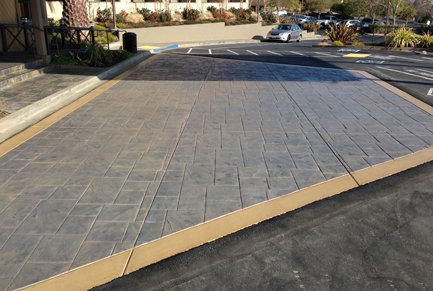A1 Professional Asphalt & Sealing Llc - An Overview
A1 Professional Asphalt & Sealing Llc - An Overview
Blog Article
Some Known Details About A1 Professional Asphalt & Sealing Llc
Table of ContentsThe Definitive Guide for A1 Professional Asphalt & Sealing LlcThe Definitive Guide for A1 Professional Asphalt & Sealing LlcEverything about A1 Professional Asphalt & Sealing LlcA1 Professional Asphalt & Sealing Llc for BeginnersNot known Incorrect Statements About A1 Professional Asphalt & Sealing Llc

The oil in a car engine is not simply oil. The REOB contains all the additives that were in the waste oil as well as the wear steels from the engine (primarily iron and copper).
By making lots of blends making use of various REOB samples and different asphalt binders, the variants mostly can be balanced out. Numerous States supplied examples of well-known REOB make-up to TFHRC scientists, that evaluated the samples to compare the portion of included (known) REOB to the found (evaluated) amount. The analyses showed an equivalent portion of included and located REOB.
More About A1 Professional Asphalt & Sealing Llc
They received an overwhelming response. The TFHRC scientists examined 1,532 examples from 40 States, one Canadian province, and two Federal Lands Highway departments. They analyzed each example twiceamounting to more than 3,000 analyses. None of those States realized that the asphalt they were acquiring had REOB. One State insisted its samples had no REOB.
Of the 1,532 samples evaluated, 12 percent included REOB, and some contained considerably high levels of it at 1020 percent. The highest degree was 34 percent in an example from Texas, which TxDOT had actually utilized in a patching compound. This screening likewise revealed the existence of phosphoric acid in 11 percent of the examples, and 2 percent included ground tire rubber.
Two years earlier at TRB's yearly meeting, the Federal scientists held an REOB workshop and provided the findings of their laboratory assessments to a standing room-only group. Some agencies do not especially ban REOB, they do enforce physical tests that avert its useeffectively a ban. Others do not outlaw it by spec, but have agreements with asphalt suppliers to prevent using REOB
Little Known Facts About A1 Professional Asphalt & Sealing Llc.
Ohio and Texas restriction degrees to much less than 5 percent of the asphalt. To develop a reliable test approach that all States can make use of, the TFHRC scientists established up a round-robin test plan.
In total, the scientists prepared and shipped 720 blends. The participants are testing the examples individually utilizing the guidelines supplied by the TFHRC scientists. The round-robin testing is nearly finished, and TFHRC remains in the process of accumulating the outcomes. The result will be a recommended AASHTO examination approach that any type of State can take on and make use of (asphalt repairs).
The pavement with REOB, which lies 0.6 mile (1 kilometer) from the sidewalk without REOB, has identical subgrade, traffic thickness, and climate. The section of Highway655 with 5 to 10 percent REOB revealed substantial splitting. In this example, the existence of REOB was the identified source of cracking at a low temperatures.
A section of test pavement in Minnesota (MN1-4) found to include REOB also broke too soon. click here now The sidewalk executed well for the very first 3 to 4 years, yet after that started to split.
9 Easy Facts About A1 Professional Asphalt & Sealing Llc Explained
The tests were not comprehensive, however they showed that at degrees of 6 percent or more, the tensile toughness of the asphalt went down significantly. At a degree of 3.5 percent REOB, the variant in the physical examination techniques was above the result of REOB. Actually, it was hard for researchers to assess whether REOB existed.

One binder parameter thought about is the distinction between the low temperature important requirements temperature level for stiffness (S) in the bending beam of light rheometer and the bending beam rheometer creep incline (m-value) kept in mind as Tcritical. TC = TC (S) TC (m-value). Evaluation of this criterion is still continuous. Two independent study teams, one from AASHTO and the various other from the Asphalt Institute, concluded that even more study is needed on the use of REOB in asphalt.
Previously, all asphalt testing gauged engineering homes such as stiffness. These examinations do disappoint what products had been included to the asphalt. One sample obtained during the TFHRC study had an extremely unusual evaluation. The sample had the adhering to examination outcomes: Superpave PG 64-28 with a high temperature quality of 67.3 Tcritical on the bending light beam rheometer was 6.7 levels Celsius.

The smart Trick of A1 Professional Asphalt & Sealing Llc That Nobody is Discussing
These results demonstrate there are weak points in the standard design testing protocols that might be made use of. The manufacturer may have a financial advantage and the item passes all the standardized examinations, however the product might not be valuable to ensuring lasting performance. To resolve this concern and the growth of new asphalt additives and extenders, TFHRC is starting a research program to make use of handheld spectroscopic devices, x-ray fluorescence spectroscopy, and Fourier transform infrared spectroscopy to enable analyses to be done in the area instead than needing to take samples back to the laboratory.
Report this page